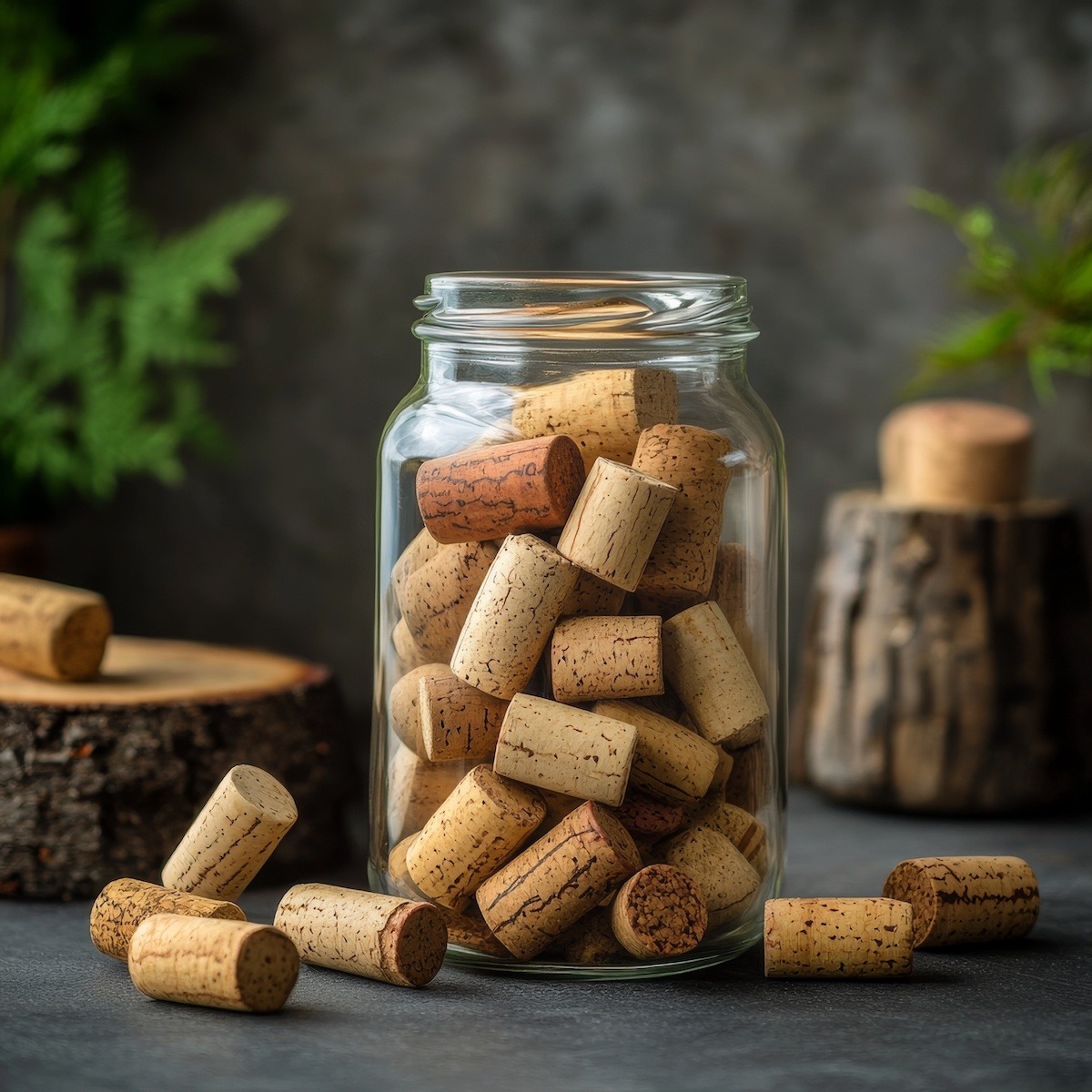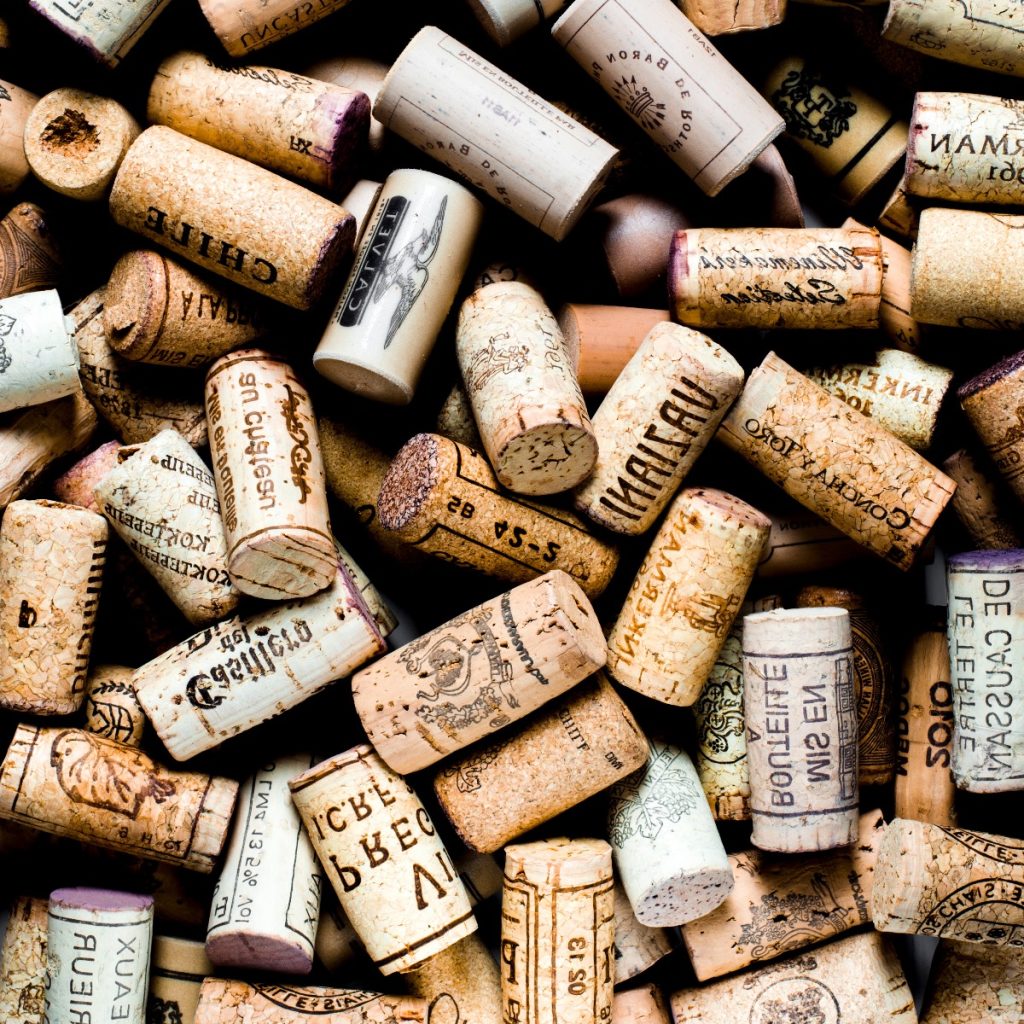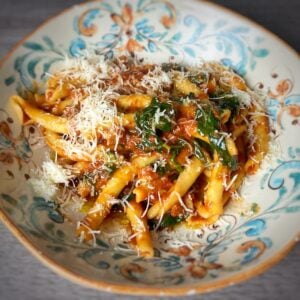There’s More Than One Way to Close a Wine Bottle
Wine closures play a crucial role in preserving quality and flavor. Each type, from traditional corks to modern alternatives, offers unique benefits and drawbacks that influence the wine’s aging process and overall enjoyment. Choosing the proper closure helps wine enthusiasts and producers determine the best way to seal a bottle.
Crafted from cork bark, natural corks have dominated wine bottling for centuries. They allow the wine to breathe and age gracefully. However, modern options like screw caps and synthetic corks have gained favor for their convenience and consistency, effectively addressing concerns about cork taint and preservation.
This post delves into the wide range of wine closures available today. It highlights their advantages, disadvantages, and ideal applications. Whether you want to improve your wine collection or explore how closures affect your favorite vintages, this guide offers valuable insights into the art of sealing wine.
Understanding these closures can enhance your wine experience and ensure every bottle tastes its best.

Natural Corks
Natural corks, a traditional and widely used wine closure, preserve and age wine effectively due to their unique properties. Here’s how producers create natural corks:
Harvesting: Workers harvest cork from the bark of cork oak trees (Quercus suber), native to the Mediterranean. They carefully strip the bark by hand every nine to twelve years without harming the tree. The first harvest, called “virgin cork,” serves other purposes since it’s less suitable for wine closures.
Boiling: After harvesting, producers boil the cork bark to soften it. This step removes impurities and makes the cork pliable, simplifying the shaping and processing.
Flattening and Drying: They flatten and dry the softened bark to reduce moisture content. Proper drying prevents mold growth and ensures the cork’s durability.
Punching and Sorting: Once dried, workers punch the bark into disc-shaped plugs and sort them by quality. The highest-quality corks are reserved for premium wine closures.
Quality Control and Final Processing: The corks undergo strict quality control to detect defects and maintain consistency. They may be cleaned, sterilized, and treated before sealing wine bottles.
Natural corks allow a small amount of oxygen to interact with the wine, enhancing its aging process and flavor development.
Technical corks, also called composite or agglomerated corks, provide a modern alternative to traditional natural corks. They combine natural cork granules with synthetic materials, delivering the benefits of natural cork alongside the consistency of synthetic options. Here’s how producers make them and their standout features:
Design and Production
Material Composition: Manufacturers blend cork granules (often from natural cork bark) with synthetic materials like polyurethane or other polymers. Adhesives or resins bind the granules together.
Production Process: They mix the cork granules with binding agents to form a paste or slurry. This mixture is molded and compressed into solid cork shapes, which are then treated and finished to ensure high quality and reliable performance.
Advantages
Consistency: Technical corks deliver a uniform and reliable seal, minimizing issues like cork taint or quality variability often seen with natural cork.
Reduced TCA Risk: By incorporating cork granules with synthetic components, these closures drastically reduce the risk of cork taint caused by trichloroanisole (TCA).
Affordability: Technical corks are usually more cost-effective than premium natural corks, making them a practical choice for wines at various price points.
Types of Technical Corks
- Agglomerated Corks: Made entirely from bonded cork granules, these are ideal for everyday wines, offering affordability and reliability.
- Composite Corks: These combine natural cork with synthetic materials, striking a balance between natural and synthetic closure characteristics.
Key Features
Technical corks have gained popularity in the wine industry due to their dependability and ability to preserve wine quality. They effectively address the drawbacks of natural cork, offering an excellent sealing option across various wine styles and price ranges.

Synthetic
Synthetic corks provide a consistent and reliable sealing solution for wine bottles, offering an alternative to natural corks. Here’s how manufacturers produce them:
How Synthetic Corks Are Made
Material Selection: Producers select polymers like polyethylene or polyurethane for their durability and sealing ability. These materials ensure the cork won’t affect the wine’s flavor.
Compounding: The polymers are mixed with additives, such as colorants, plasticizers, and stabilizers, to enhance their texture, performance, and appearance.
Molding: The compounded material is heated and injected into molds, shaping the corks to uniform sizes. This process ensures a precise fit for wine bottles.
Cooling and Setting: Once molded, the corks cool and set, solidifying into their final shape and preparing them for bottling use.
Quality Control and Final Processing: Each cork undergoes rigorous quality checks to ensure it meets industry standards. Some corks receive treatments or coatings to improve their functionality and appearance before packaging.
Why Choose Synthetic Corks?
Synthetic corks are consistent, resist cork taint, and are easy to use. They create a dependable seal that preserves wine quality without the variability or risks associated with natural corks.

Screw Caps
Screw caps, or Stelvin closures, offer a modern alternative to traditional corks for sealing wine bottles. These closures use a metal cap with a plastic liner to create an airtight seal. Here’s a closer look at their design, benefits, and growing popularity:
Design and Function
Metal Cap: Manufacturers craft the cap from aluminum or other metals to fit securely over the bottle’s neck.
Plastic Liner: A polymer-based liner inside the cap forms a tight seal, preventing air from entering the bottle. This seal preserves the wine’s freshness and protects it from oxidation.
Advantages of Screw Caps
Consistency: Screw caps deliver a reliable seal, eliminating the risks of cork taint and quality variability.
Ease of Use: These closures are easy to open and reseal, making them highly convenient for casual drinkers.
Preservation: Screw caps offer superior protection against oxidation and spoilage, making them ideal for both short-term and long-term storage.
History and Adoption
Introduction: Winemakers first adopted screw caps in the 1960s, with Australia and New Zealand leading the way. Producers initially used them for wines meant for quick consumption or large-scale production.
Global Acceptance: By the late 1990s and early 2000s, winemakers worldwide embraced screw caps for their practical benefits. Their reliability in preventing cork taint and ensuring quality drove this adoption, particularly in regions like Australia, New Zealand, Europe, and North America.
Screw caps now serve as a popular choice among winemakers for preserving wine quality and offering convenience to consumers.
Zork Closures
Zork closures provide an innovative way to seal wine bottles, combining convenience with effectiveness. Here’s an overview of their design, benefits, and growing adoption:
Design and Function
Structure: Zork closures include a plastic cap with a built-in tamper-evident seal. The design features a synthetic cork-like insert that functions similarly to a traditional cork.
Opening Mechanism: The cap uses a twist-off design that seals the bottle securely and allows easy opening. Many Zork closures also include a pull tab or push-down mechanism to ensure a tight seal until the bottle is opened.
Advantages of Zork Closures
Ease of Use: These closures are simple to open and reseal, offering a user-friendly experience similar to screw caps.
Tamper-Evident Feature: The tamper-evident seal guarantees the wine’s integrity by showing whether the closure has been opened, preventing contamination.
Aesthetic Appeal: Zork closures often provide a more premium appearance compared to screw caps, enhancing the wine’s visual appeal and perceived quality.
Adoption and Use
Emergence: Zork closures entered the market in the early 2000s as an alternative to corks and screw caps.
Popularity: While less common than screw caps, Zork closures have found a niche among winemakers who want to blend convenience with traditional aesthetics. Producers often use them for specific products or target markets where their unique features resonate with consumers.
Zork closures deliver a modern wine-sealing solution by combining the benefits of synthetic materials with ease of use and a polished look. They showcase the ongoing evolution of wine closures, catering to diverse consumer and producer needs.

Glass Corks
Glass corks, also called glass stoppers or glass closures, provide an elegant and functional alternative to traditional corks and screw caps. Here’s a closer look at their design, benefits, and usage:
Design and Function
Material: Manufacturers craft glass corks from high-quality, food-grade glass. They include a rubber or silicone gasket to ensure an airtight seal.
Structure: The design features a tapered glass plug that fits snugly into the bottle’s neck. The gasket enhances the seal while allowing for easy removal and resealing.
Advantages of Glass Corks
Aesthetic Appeal: Glass corks deliver a sleek, sophisticated look that enhances a wine bottle’s presentation, adding a luxurious touch.
Preservation: The combination of the glass plug and gasket creates an airtight seal that prevents oxidation and keeps the wine fresh.
Reusability: Glass corks are reusable and easy to clean, making them a sustainable and eco-friendly choice.
Adoption and Use
Emergence: Glass corks gained attention in the late 20th and early 21st centuries as a premium alternative to corks and screw caps.
Popularity: While less common than other closures, glass corks appeal to premium and boutique wineries. Producers often use them for specialty or limited-edition wines, where presentation and perceived quality are key.
Glass corks combine style and practicality, offering wine producers a distinguished closure option that elevates their product while ensuring excellent preservation.
Here’s a handy chart showing the types of closures, their pros and cons, and the cost of each closure.
| Closure Type | Pros | Cons |
| Natural Cork | Caché–part of the ceremony of drinking wine, most prevalently used, suitable for long aging, natural product | They can dry out and crumble, causing leaking, so bottles must be stored on their sides, causing the possibility of cork taint and resealing; as more and more wines are made, it’s harder to have enough cork trees to go around |
| Technical Cork | Look and act like natural cork | Possibility of cork taint, resealing |
| Synthetic Cork | It looks similar to natural cork, with no cork taint | Not suitable for extended cellaring, removal/resealing, environmental impact |
| Stelvin Closure | Tight seal, resealable, no cork taint, clean and simple closure | Not suitable for long cellaring, perception issues (“lower-class”) |
| Zork | Cool name pops when opened, no cork taint, doesn’t need a foil cover, resealable. | Price, especially in relation to Stelvin closures |
| Vino-Seal | Elegant, resealable, no cork taint | Cost of product and cost of bottling equipment |








2 Responses
Do you know where I can find some zork closures?
TKS! Pam
They have them on Amazon.